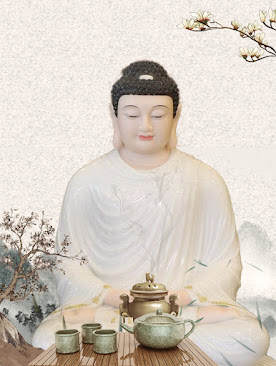In Buddhism, the teachings of the Three-Vehicle Bodhi were established during the Five Periods of Time. The Five Periods of Buddhist teachings comprise the Immediate Teaching, the Three Turnings of the Dharma Wheels (Transmission), and the Perfect Teachings. The Immediate Teaching is the teaching about the Buddha’s attainment of Buddhahood during the very first 21 days, also named the Huayan period in Chinese, the period when all the Buddha’s teachings were laid down. The Avatamsaka Sutra provides a comprehensive and definitive description of the Buddha’s enlightenment experience and how the Buddha authenticated His ultimate attainment of Buddhahood to all the humans and celestial beings within the three realms. For this reason, the Avatamsaka Sutra is one of the most influential Mahayana sutras and has been called by the translator Thomas Cleary “the most grandiose, the most comprehensive, and the most beautifully arrayed of the Buddhist scriptures.”
Upon attaining
Buddhahood, Buddha Sakyamuni thought that the process of attaining Buddhahood
was inconceivable and difficult for people in the human realm to comprehend. However,
out of great compassion and upon the pleading of heavenly kings, the Buddha
thought about how to explain the expansive Dharma of the Buddha Bodhi for
sentient beings in the human realm. As a result, the Buddha completed his preaching
covering the whole picture of Buddhism within 21 days (Huayan period), and His
audiences included all those in the human and heavenly realms.
After 21 days, when
the Buddha had finished the teaching of the Avatamsaka Sutra, He walked
to the Deer Park in Sarnath (village), where He first taught the five bhikkhus the
path to liberation, which mainly focused on the doctrines of the Four Noble
Truths and the Eightfold Path. All the five bhikkhus became arhats or Bodhi of
the Two Vehicles. This is known as the First Turning of the Dharma Wheel.
The five arhats then
established Sangha (a monk community). Their practices mainly centered on the path
to liberation as their initial cultivation for the first ten years or so, known
as the period of Agama. The Buddha’s teachings consist of two paths. The path
to attain liberation from samsara refers to entering nirvana for the Two
Vehicles’ practitioners (the Sound Hearers and the Solitary Realizers). He also
taught the path to achieving Buddhahood to the bodhisattvas who were determined
to cultivate the Bodhi path to achieve Buddhahood to benefit all beings. The
establishment of the Sangha community also took place during the First Turning of
the Dharma Wheel.
As more and more
practitioners achieved fruition after they eliminated their self-view and self-attachment
through their practice of Buddhism, they gained confidence in the Buddha’s
teachings. They came to know they can transcend the suffering of cyclic birth
and death in the three realms. Then the Buddha observed that the timing and
conditions had ripened for these people to receive advanced teachings; hence,
the Second Turning of the Dharma Wheel took place.
During this
period, the Buddha taught the Perfection of Wisdom sutras (Prajnaparamita
sutras), which focused on the origin of the universe and existence. In Buddhist
terms, this is collectively called the true reality of the dharma realm. After
around two decades of preaching the Dharma, bodhisattvas had significantly
enhanced their prajna (wisdom) of the true reality by awakening to the true
Mind. The Buddha then continued with the Third Turning of the Dharma Wheel (by
expounding on the vijnana only, commonly known as the expanded teachings
of the vast Great Vehicle, the vaipulya sutras).
All the teachings
in the Second and Third Turnings of the Dharma Wheels were based on the prajna
wisdom; hence, attaining awakening (enlightenment) to the Buddha nature (alayavijnana,
the eighth vijnana) is the threshold for bringing forth the prajna.
Thus, the discourses on the Heart Sutra (Prajna Paramita Hrydaya Sutra), the
Diamond Sutra, the Flower Garland (Mahavaipulya Buddhavatamsaka Sutra), and the
Lankavatara Sutra, among others, also took place during these periods.
Therefore, it is
important to know the whole picture regarding the Buddha’s teachings and to realize
the core doctrine in Buddhism that there is a permanent dharma, a true
self-existing entity, the alayavijnana (the eighth vijnana, the
Buddha nature), which serves as a storage space for all the seeds of our past
deeds. The alayavijnana is the ultimate teaching of the Buddha rather
than annihilationism (all phenomena being interdependently originated, without
a fundamental cause). The insights regarding the establishment of the
teachings of the Three-Vehicle Bodhi in the Five Periods of Buddhist teachings cannot
be overlooked by all Buddhists.
#Buddha #Buddhism #vijnana #alayavijnana #threevehiclesbodhi #buddhanature #heartsutra #huayan #avatamsakasutra #threeturningsofdharmawheel #dharmawheel



Namo Buddhaya!
ReplyDelete